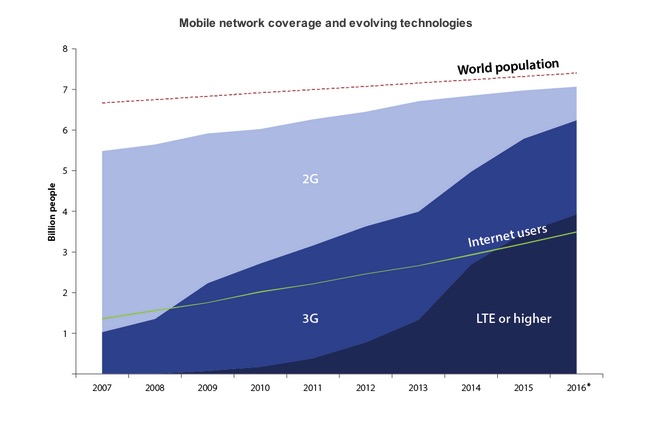The International Telecommunication Union (ITU) has released the 2016 edition of its Facts and Figures (PDF) on technology adoption, and among the many data points it contains is an odd concentration of connected “things” in countries with Fjords.
Sweden handily tops the table of nations when one counts machine-to-machine accounts per 100 cellular connections, with 50 per 100. Next comes New Zealand, Norway and Finland, with France in fifth place.
A rather less obscure number can be had when one counts the number of people who can now get a mobile phone to work: the ITU reckons 95 per cent of us can now get at least one bar of coverage.
The numbers are less impressive when one considers internet use: 53 per cent of us are not on the 'net. 75 per cent of Africans aren't online and even in Asia 58 per cent of folks aren't able to watch cat videos on demand. That latter figure comes despite China having 230 million households online, compared to 60 million in India.
 Wired planet: nearly everyone can get a mobile signal now
Wired planet: nearly everyone can get a mobile signal nowBut even if someone in a developing nation can get online, they'll get a lousy connection as poorer nations lack good connections to the outside world. The average African country has just six internet hosts.
For what it's worth, the report says the world has international Internet bandwidth of 185,000 gigabits per second, up 30,000 gigabits in 2008.
The ITU's take on the numbers it presents is that they represent decent progress towards sustainable development goals, but that digital divides persist across economic and gender lines.
Source: Theregister
No comments:
Post a Comment